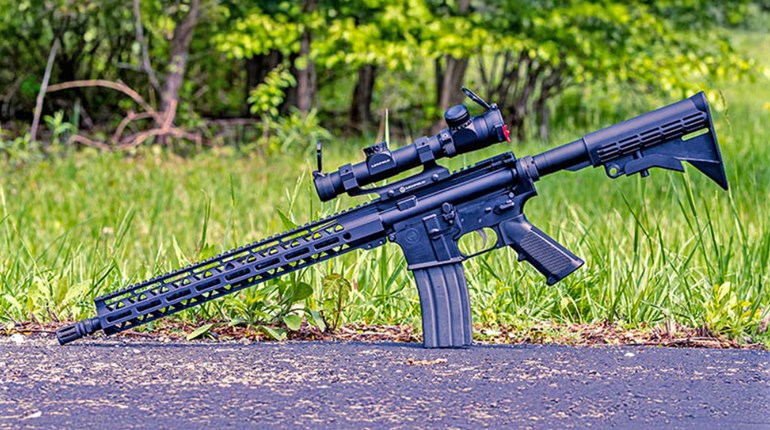
A wildcat cartridge is a design that has never been commercially manufactured. Many wildcats are the result of an inventor tinkering with an extant Small Arms and Ammunition Manufacturer’s Institute (SAAMI)-approved cartridge. Alterations can be simple or complex. Wildcat cartridges don’t get as much attention as they did 100 years ago. This is partly because we have so many factory cartridges—the need for something different is limited. That doesn’t mean wildcatting is dead or that there aren’t niche needs new cartridges can fill.
Back in the day, probably before you were born, wildcatters produced some excellent cartridges that eventually received the ultimate recognition of being adopted into factory production. Though some have tried to make it so, there’s no money in wildcatting, and most often little fame. More importantly, creating your own wildcat cartridge is fun and educational. Still, on rare occasions, an enterprising individual comes up with a cartridge that’s well received.
For example, look at the new-for-2017, 22 Nosler. The 22 Nosler is essentially a 6.8 SPC case necked down to .224 caliber with a rebated rim. Nosler created this cartridge in-house, but in a similar form it was once known as the 22 PDK, developed by Illinois wildcatter Roy Winnett. The primary difference is the 22 PDK utilizes the common 6.8 SPC rim diameter. The rebated rim diameter of the Nosler is the same as the 5.56 NATO to make it compatible with standard AR-15 bolt-carrier groups. The PDK case is easy to make at home, the Nosler not so much.
Another wildcat that’s gone mainstream is the 6 mm Creedmoor. This is a simple conversion; the 6.5 Creedmoor case is merely necked down to 6 mm. The 6 mm Creedmoor wildcat has been around for a while; Hornady decided to make it legit this year. With this legitimization, brass and dies will be SAAMI standardized. (Standardization is a problem with wildcats because different folks make different reamers and dies.) Is the 6 mm Creedmoor the next big thing? Who knows? I witnessed Hornady’s Neal Emery take a coyote at an impressive 806 yards with a JP Enterprises AR-15 chambered in 6 mm Creedmoor. What a shot.
Wildcatting by necking down, like with the 6 mm Creedmoor, can be simple. Look at the last wildcat cartridge I created. It’s also based on the 6.5 Creedmoor. Typically, with a wildcat, you need a chamber reamer for the barrel and reamers for the sizing and bullet-seating dies. Then you need someone to make those dies. This can get as expensive as a drunken weekend in Vegas and take just about as long to forget. Being a hillbilly raised by hillbillies, I figured there had to be a more-affordable, jackleg answer to wildcatting.
I wanted an AR-10-compatible, short-action, .257-caliber cartridge, which was ballistically superior to all other short-action cartridges in that caliber. The 6.5 Creedmoor case was ideal because, being shorter than the .308 Win. case, it would work with the longest, highest BC, .257-caliber bullets. Manson Reamers made a chamber reamer (and with the exception of the neck size) to accept .257-caliber bullets. It was dimensionally identical to the 6.5 Creedmoor. By using a set of Hornady 6.5 Creedmoor bushing dies, with a smaller .277-diameter Redding bushing, I could size cases and load my wildcat, and custom dies weren’t necessary. Note that bushing dies are based on outside—not inside—neck diameters.

Though intended to help shooters fine-tune neck tension when handloading, bushing dies can also be a wildcatting tool when applied in this manner. In fact, you could similarly make a wildcat cartridge for your AR by necking down the 6.5 Grendel to .257 caliber. You could also neck down the 6.8 SPC to 6.5 or .257. In instances where the step down is more than .01 inch, you’re made to sequence through several smaller bushing dies to reach the desired outside/inside neck diameter.
My project worked marvelously, and I could have named the new cartridge the .257 Creedmoor, the Quartermoor or just simply the .257 Wildcat. Given the hillbilly approach to its creation, I decided on 2Fity-Hillbilly. It will push 70-grain bullets to 3,500 fps and 120-grain bullets to almost 3,000 fps. For those interested, Dove’s Custom Guns has the chamber reamer and can build a boltgun or AR for this cartridge, so 6.5 Creedmoor dies and a .277 bushing are all you’ll need to load it. The takeaway from all of this is that wildcatting can be affordable and relatively easy.
We may not really need any new cartridges, but that does not mean we should not have them. In our modern world, the advantages they offer are usually small, with the gain rarely justifying the expense. At least wildcatting with bushing dies is much more affordable. It also allows you to individualize your cartridge just like you can personalize your AR. The modern, modular AR has made a custom rifle something that could be built at home. Bushing dies allow similar versatility with cartridges.






































